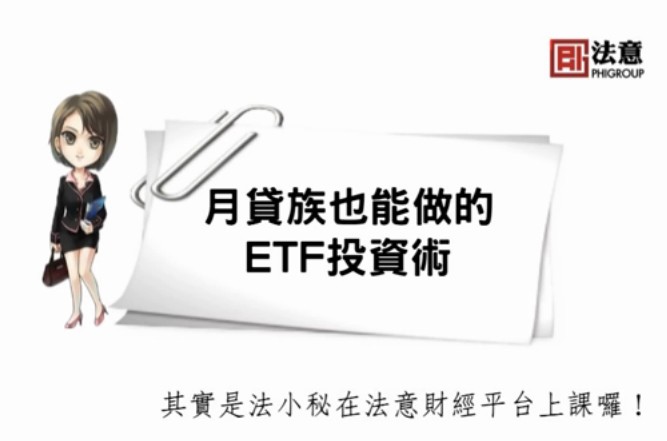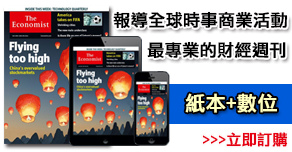
Feb 26th 2009
From The Economist print edition
Burnished by bad news, gold looks like a good each-way bet
噩耗頻頻煉真金,投資勝算握手中
IT IS 1979 and Harry 「Rabbit」 Angstrom, the hero of John Updike's series of novels, is explaining to his wife why he has just spent more than $11,000 on 30 gold krugerrands. 「The beauty of gold is, it loves bad news,」 he says. Three decades later, gold is once again thriving on despair. Before Christmas, a troy ounce could be bought for around $800. By the third week in February, gold was trading at close to $1,000 an ounce.
1979 年,約翰•厄普代克(John Updike)[注1]系列小說中的主人公,「兔子」哈里•安斯特洛姆,在向他的妻子解釋,為什麼自己剛剛花了一萬一千多美元買了三十枚南非富格林金幣 [注2]。「黃金的美麗之處就是它鍾愛壞消息,」他說。30年後,黃金於絕望之中再度興盛。去年聖誕節前,金價還在800美元/盎司 [注3] 附近。到今年二月中下旬,金價已經劍指1000美元/盎司了。
A surge in demand for gold as an investment lies behind the jump in prices. Flows into exchange-traded funds, which buy and store gold for their shareholders, rose from 105 tonnes in January to 208 tonnes in the first three weeks of February, according to Suki Cooper at Barclays Capital. At that rate, inflows will soon surpass the total of 322 tonnes for the whole of 2008. Buying by investors has more than made up for a slump in gold-jewellery purchases in key markets, such as India and Turkey, where higher prices and wilting exchange rates have crushed demand.
此次金價大漲的背後原因是黃金投資需求的激增。據巴克萊銀行(Barclays Capital)的索奇•庫珀(Suki Cooper)統計,由於股東們紛紛通過交易所交易基金(ETF)[注4]購買並儲存黃金,截止2月前三週,黃金ETF的增持量已從1月的105噸上升至 208噸。照此速度,增持量會很快就會超過2008年全年的增持總量,322噸。投資買盤的湧入完全彌補了印度和土耳其等主要黃金首飾消費市場的銷量下滑。在上述地區,上漲的金價和疲軟的匯率沉重打擊了黃金消費需求。
People have long viewed gold, rightly or wrongly, as a hedge against high inflation and a weak dollar. So when the gold price briefly broke through the $1,000 mark in March last year, it was easily explained by fears that rising commodity prices (and, in America, a weak dollar) would feed inflation. An earlier run-up in gold prices, between 2002 and 2005, coincided with a sustained fall in the dollar. But now gold is strong even as the dollar thrives and economies face deflation.
無論對錯,人們長久以來將黃金譽為規避高通脹和美元疲軟的上佳手段。因此,當金價去年3月短暫突破1000美元大關時,被簡單地解釋為是出於對通貨膨脹的擔心,因為人們擔心商品價格上漲(在美國還包括美元疲軟)會對通貨膨脹推波助瀾。此前一輪的金價上漲行情,即2002至2005年間,就恰逢美元持續下跌。但是,即使目前美元需求旺盛,經濟面臨通貨緊縮,黃金依然堅挺。
Gold's recent progress seems to be a response to generalised fears of economic turmoil. When supposedly safe savings vehicles, such as bank deposits, look shaky and offer scant returns, gold has greater appeal as an alternative store of wealth. It also looks like an attractive each-way bet. If drastic cuts in interest rates work too well, that will fuel inflation. If they do not work, prices of assets, such as stocks and houses, will sink further.
黃金近期的漲勢可以看成是對經濟動盪的普遍擔心。原以為安全的儲蓄產品,如銀行存款,看起來都岌岌可危,提供的回報也都很不理想,此時黃金作為代替的保值工具,就更具吸引力了。無論如何推演未來情況,黃金看起來都能大小通吃,魅力難擋。如果大幅度降息的作用過於明顯,將會助長通貨膨脹。若是沒有效果,股票和房產等資產的價格則將進一步下跌。
Like Updike's protagonist in 「Rabbit is Rich」, the new wave of gold investors typically have wealth to preserve, according to Adrian Ash at BullionVault, an online service for gold investors. 「Gold is something you buy if you have something to lose,」 he says. What links today's gold fever with the 1970s rush is negative real deposit rates. Many savers now prefer a claim on gold in a vault to one on cash in the bank. There is less risk that a counterparty blows up, and the 「carrying cost」 of gold in terms of lost interest is, in any case, vanishing.
據黃金投資交易網站BullionVault的阿德里安•艾施(Adrian Ash)統計,像厄普代克的著作《兔子,富了》中的主角一樣,新一撥的黃金投資者通常都有財產需要保值。「若面前危機重重,就該購買黃金,」他說。將此時的黃金熱與上世紀70年代的沖頂聯繫在一起的是存款實際負利率。許多儲戶聲稱相對於銀行裡的存款,現在更喜歡金庫裡的黃金。不僅交易方違約的風險較少,而且黃金的「保管費」相對於利息損失,很多情況下,可以忽略不計。
How high might the gold price go? Gold bugs talk excitedly about it reaching $2,300, which would match the January 1980 peak in real terms (see chart). Already the gold price is above its average since 1972 when calculated in today's money. There is a limited supply of gold and lots of potential buyers—ideal conditions for a bubble, says Stephen Jen at Morgan Stanley. If gold is burnished by grim news, it seems likely to become still more alluring.
金價會漲到多高?持樂觀態度者興奮地預測會達到2300美元,扣除物價的變動也就是可以觸及1980年1月的高峰期值了(見圖表)。以現在的價格計算,黃金的價格已經高於1972年以來的均價了。摩根士丹利的任永力(Stephen Jen)表示,黃金有限的供應,加上不勝枚舉的潛在買家——形成了價格泡沫滋生的理想溫床。黃金若是經過不利消息的磨礪,其誘人之處似乎更勝從前。
譯註:
[1] John Updike,約翰•厄普代克(1932年-2009年)出生在賓夕法尼亞州,是家中獨子。厄普代克曾就讀哈佛大學英文系,並曾在英國牛津大學學了一年的藝術。厄普代克自23歲靠寫作為生,為《紐約客》雜誌寫了大批的詩歌、短文和短篇小說,後來辭去《紐約客》工作後專事寫作,定居易普威治鎮長達十七年之久。2003年厄普代克以短篇小說集《早期故事》抱走普利策獎。他最著名「兔子四部曲」系列小說曾兩次獲得普利策獎。在半個世紀的時間裡,他寫了大約50 部書,內容涉及二戰後美國生活的方方面面,包括性愛、宗教與藝術等。
「兔子」哈里•安斯特洛姆(Harry Angstrom)的這一生挺熱鬧,也可以說在時代大潮裡載浮載沉。在中學時代,他曾經是個籃球明星,因為球技不錯、靈活敏捷,因此得了個「兔子」的綽號。
《兔子,跑吧》(Rabbit,Run,1960)是「兔子四部曲」的第一部。故事發生在1959年3月至6月。講述年輕的主人公「兔子」哈利因不滿平庸的工作和家庭生活而離家出走、不斷逃跑的經歷。
《兔子,回家》(Rabbit Redeux,1971)是兔子四部曲之二,故事發生在1969年7月16日至10月31日。講述主人公哈利返回家後,妻子反離家跟情人同居;以及哈利收留嬉皮士女孩吉爾和黑人逃犯斯基特後發生的事變。
《兔子,富了》(Rabbit Is Rich,1981)寫又十年後,46歲的兔子儼然一個成功的經紀人。1979年美國受石油危機影響大鬧油荒,但是兔子經營著岳父的汽車行、代理銷售日本豐田汽車,大發其財。
《兔子,死了》(Rabbit at Rest,1990)將故事放在1989年。美國經濟突飛猛進,但是吸毒、艾滋、肥胖、空虛一直是黃金時代的黑暗一面。兔子被妻子指派替代兒子接手汽車行的生意,但是某一日,他重蹈覆轍、離家出走,不顧身體狀況狂吃一頓,又去打籃球,結果心肌梗塞而死。洋洋灑灑的兔子四部曲以一個意味深長的詞結束:Enough,夠了。
[2] gold krugerrands,南非富格林金幣。20世紀70年代,南非黃金的平均年產量已佔到西方世界黃金總產量的75%,由此意識到:推動黃金消費甚為重要。隨著1971年世界金本位的徹底崩潰,南非首先推出了富格林金幣。富格林金幣的推出,象徵著國際黃金投資品的問世。隨著富格林金幣的銷售成功,促使更多的國家發行普制金幣。 1979年加拿大楓葉金幣問世;1981年墨西哥自由金幣問世;1982年中國熊貓金幣發行;1986年美國鷹揚金幣問世;1987年英國不列顛金幣問世;1989年奧地利音樂金幣問世。世界金幣市場最終形成規模。
[3] troy ounce,金衡制盎司:重量單位。整體縮寫為oz.tr(英)、oz.t(美)。常見於金銀等貴金屬的計量中。 1盎司=31.1035克;12盎司=1 lbs磅。 常衡制的ounce (縮寫oz),等於1/16磅,或約等於28.3495克
[4] Exchange Traded Fund,英文縮寫ETF,中譯為「交易所交易基金」,又稱「交易型開放式指數基金」。ETF是一種在交易所上市交易的開放式證券投資基金產品,交易手續與股票完全相同。ETF管理的資產是一攬子股票組合,這一組合中的股票種類與某一特定指數,如上證50指數,包涵的成份股票相同,每隻股票的數量與該指數的成份股構成比例一致,ETF交易價格取決於它擁有的一攬子股票的價值,即「單位基金資產淨值」。這裡的ETF應該是公司型的基金,即是依據基金公司章程設立,在法律上具有獨立法人地位的股份投資公司,投資者購買基金公司的股份後,以基金持有人的身份成為基金公司的股東。
翻譯者:ecocn team




 留言列表
留言列表
